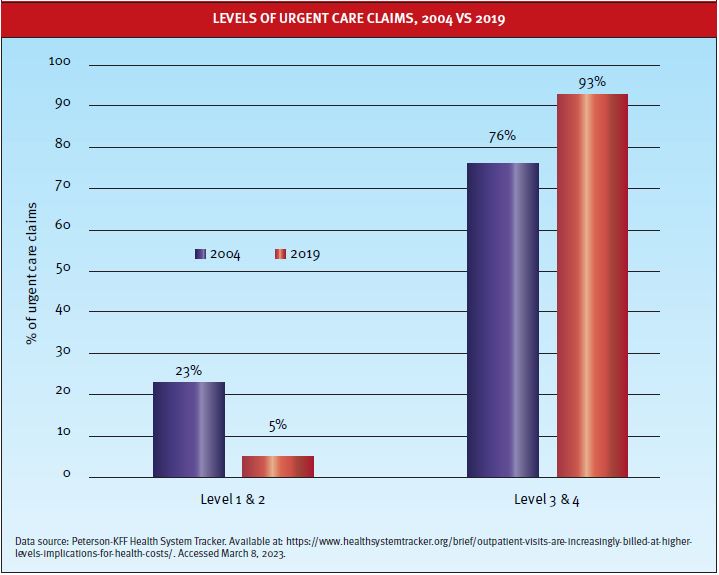There’s been a bit of discussion in the urgent care industry (including in JUCM articles of late) concerning a perceived degradation of acuity in urgent care practice. The worry is that in the service of getting a maximum number of patients in and out the door quickly, some patients with more than minimally complicated complaints are advised to visit the closest emergency room when they could just as safely (and more cost-effectively) be treated in urgent care.
Certainly that could be happening, but data released just this February
through the Peterson-KFF Health System Tracker paints a brighter picture. Leading up to the COVID-19 pandemic, the trend was actually for urgent care providers to treat more patients presenting with relatively more complicated complaints than they did 15 years prior (level 1 and 2 claims vs level 3 and 4 claims).
How much, if at all, that has changed since the pandemic has yet to be quantified, but the graph below illustrates clearly that the evolution of urgent care has favored practicing to the upper end of the provider’s training—which further illustrates that if you did it then, you can do it again.

